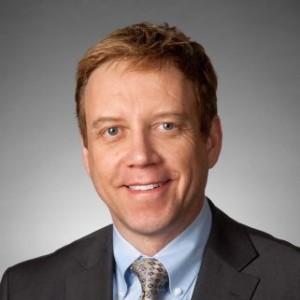By Staff
 Iain McKinnie, Lockheed Martin Advanced Technology Center, CLEO: Applications & Technology 2013 Program Chair
Iain McKinnie, Lockheed Martin Advanced Technology Center, CLEO: Applications & Technology 2013 Program Chair
This year’s CLEO Conference, sponsored by APS/Division of Laser Science, IEEE Photonics Society and the Optical Society features an expanding Applications & Technology Program focusing on the core areas of Biomed, Energy, Industrial and Government/National Science and Security Standards. Tom Giallorenzi, OSA’s Science Advisor interviewed Iain Mckinnie, Program Chair, Applications & Technology to delve further into some of this year’s hot topics.
Tom Giallorenzi: Can you say a little bit about technology transitions that this meeting is fostering?
Iain McKinnie: “………there are many great examples in the Applications and Technology conference that you can see, including quantum cascade lasers. We have a plenary talk this year which we’re very excited about by Dr. Kumar Patel from Pranalytica who is also a professor at UCLA. And he’s going to be talking about how those quantum cascade lasers – now room temperature and multi-watt lasers in the midwave and long wave infrared region – are impacting applications from civil aircraft defense via countermeasures, through to trace gas detection for a range of commercial security and environmental applications. So that’s one capability that’s transitioning.
There are many more. In the energy area, we’re looking at increasing transition of broadband nitride semiconductor materials in solar cells and in extending the spectral range of LEDs down into the UV region from the visible region. We’re also seeing increasing transition of ultrafast lasers, which continue to enable advances in manufacturing from the macro to the micro down to the nano scale. ……. I think that we keep the wow factor in the conference also, and that comes in via big science; with some of the facility class laser systems: electron beams being used to generate extremely short bursts of intense light, and being used to generate extremely broadband, broad spectral access from the UV right out far into the infrared region. Also, we have a big emphasis this year on the National Ignition Facility and the latest progress that they have achieved in the extreme high field regime. So, you know, I think as well as things that could have mass market applicability, it’s important that we keep our finger on the pulse of the really impressive landmark advances at the unique and high power end.
Tom Giallorenzi: Can you say a few words about the special symposia?
Iain McKinnie: One thing we’re very consciously focused on in 2013 at CLEO A&T is to bring in a number of special symposia which we believe represents a pretty broad suite of the application space for lasers that’s emerging. I mentioned already the symposium related to the national ignition facility. We have a number of others. One that we’re excited about at the extreme other end of the scale is a lab on a chip symposium this year where we’re really taking advantage of advances not only in laser and LED sources, but also in microfluidics and nanotechnology and a whole lot of related applications to really take the pulse of that field and get a sense for how lab on a chip is advancing.
Beyond that, we also have a special symposium that’s looking at how the advances in sources are impacting biomedical applications more broadly. That’s looking at advances in, for example, multi-modal imaging – and looking at how relatively new sources like super continuum sources are being transitioned over into the application space. And that’s a good example where there’s a need for those sources to be quieter and so that then flows back to the laser developers to really work on tailoring those sources for those kinds of applications. I see biomedicine really being one of our significant growth areas in applications in technology in the coming years.
For more information on CLEO: 2013, visit www.cleoconference.org.
Posted: 30 April 2013 by
Staff
| with 0 comments